1. What is an electron microscope?
An electron microscope is an instrument that uses electron beams and electron lenses instead of light beams and optical lenses to image the fine structures of substances at very high magnifications based on the principle of electron optics. In recent years, the research and manufacture of electron microscopes have made great progress: On the one hand, the resolution of electron microscopes has been continuously improved. The point resolution of transmission electron microscopes has reached 0.2-0.3nm, and the lattice resolution has reached about 0.1nm. , People have been able to directly observe the atomic image; on the other hand, in addition to the transmission electron microscope, a variety of electron microscopes have also been developed, such as scanning electron microscopes and analytical electron microscopes. Although the resolving power of the electron microscope is far better than that of the optical microscope, it is difficult to observe living organisms because the electron microscope needs to work under vacuum conditions, and the irradiation of the electron beam will also cause the biological samples to be damaged by radiation. Next, the editor will talk to you about the relevant content of the electron microscope, including: the principle, structure, shortcomings, application fields, and the difference between the electron microscope and the optical microscope, and its application in agriculture.
2. Principle of electron microscope
At present, electron microscope technology has become an important means to study the microstructure of the body. Commonly used are transmission electron microscope and scanning electron microscope. The following describes the working principles of the two electron microscopes:
(1) Transmission electron microscope
Transmission Electron Microscope or Transmission Electron Microscope, commonly referred to as electron microscope or electron microscope (EM), is the most widely used type of electron microscope.
a. Working principle: Under vacuum conditions, after the electron beam is accelerated by high voltage, it forms scattered electrons and transmitted electrons when it penetrates the sample, and they are imaged on the fluorescent screen under the action of the electromagnetic lens. When the electron beam is projected onto the sample, corresponding electron emission can occur according to the density of the tissue components. For example, when the electron beam is projected onto a structure with a large mass, the electrons are scattered more, so the electrons projected on the fluorescent screen are less and appear dark. Like, electronic photos are black.
b. Main advantages: high resolution, can be used to observe the ultrastructure inside tissues and cells as well as the whole picture of microorganisms and biological macromolecules.
(2) Scanning electron microscope
A scanning electron microscope is a scanning electron microscope, which is mainly used to observe the surface morphology of the sample, the structure of the split surface, and the structure of the inner surface of the lumen.
a. Working principle: SEM uses secondary electron signal imaging to observe the surface morphology of samples. Scan the surface of the sample with a very fine electron beam, excite the surface of the sample to release secondary electrons, collect the generated secondary electrons with a special detector, form an electrical signal and send it to the picture tube, and display the object on the fluorescent screen. The three-dimensional conformation of the (cell, tissue) surface can be photographed.
b. Main advantages: the depth of field is long, and the images obtained have a strong sense of three-dimensionality, which can be used to observe various morphological features of biological samples.
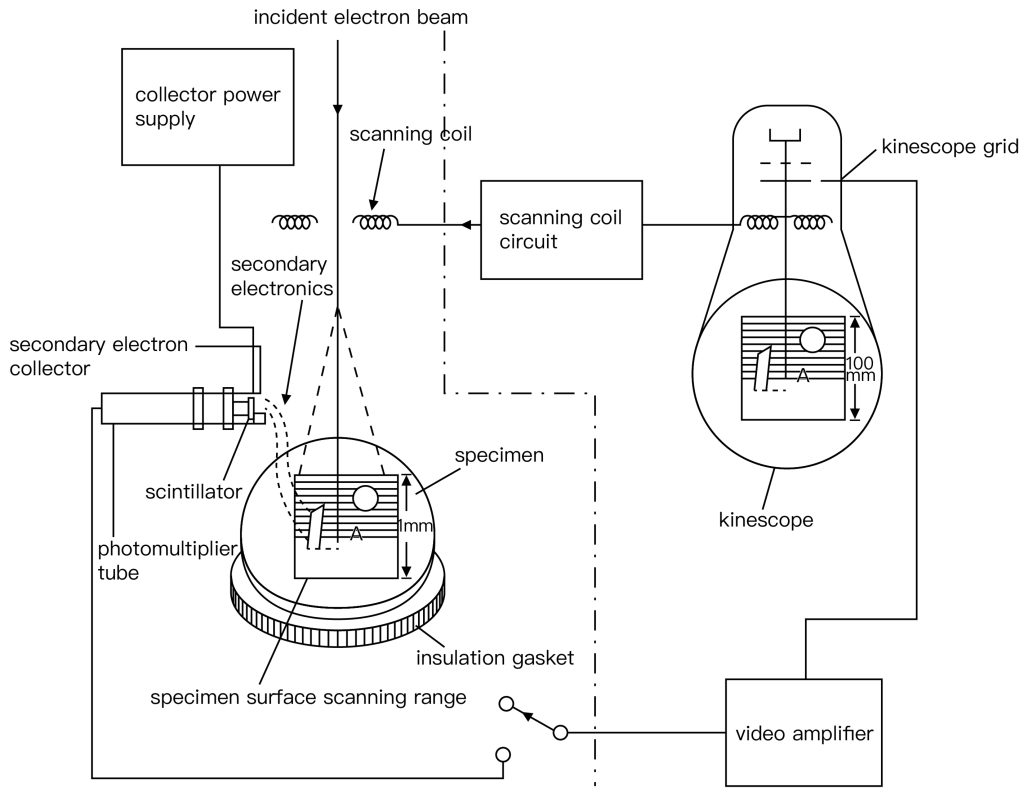
3. Electron microscope structure
The electron microscope consists of three parts: electron optical system, vacuum system and power supply system. The following three parts are introduced respectively:
(1) Electron optical system
- The electron optical system mainly includes electron guns, electron lenses, sample holders, fluorescent screens and camera mechanisms, etc. These components are usually assembled into a cylinder from top to bottom.
- The electron gun is composed of a tungsten hot cathode, grid and cathode. It can emit and form an electron beam with a uniform speed, so the stability of the accelerating voltage is required to be no less than one ten-thousandth.
- The electron lens is the most important part of the electron microscope lens barrel. It uses a space electric field or magnetic field symmetrical to the axis of the lens barrel to bend the electron track to the axis to form a focus. Its function is similar to that of a glass convex lens to focus the beam, so it is called for an electronic lens. Most modern electron microscopes use electromagnetic lenses, which focus electrons through a strong magnetic field generated by a very stable DC excitation current passing through a coil with pole shoes.
(2) Vacuum system
In order to ensure that it only interacts with the sample in the entire channel and does not collide with air molecules, therefore, the entire electron channel from the electron gun to the backplane box of the camera must be placed in a vacuum system, generally with a vacuum degree of 10.4 to 10.7 mm Hg.
(3) Power supply system
The transmission electron microscope needs two parts of power supply: one is to supply the high voltage part of the electron gun, and the other is to supply the low voltage steady current part of the electromagnetic lens. The stability of the power supply is an extremely important sign of the performance of the electron microscope. Therefore, the main requirement for the power supply system is to generate high and stable accelerating voltage and excitation current for each lens. In addition to the above-mentioned power supply parts, modern instruments also have automatic operation program control systems and computer systems for data processing.
4. The advantages of the electron microscope
- High resolution, the resolution of the optical microscope is 0.2μm, and the resolution of the transmission electron microscope is 0.2nm, which means that the transmission electron microscope is magnified by 1000 times on the basis of the optical microscope.
- Transmission electron microscopes are often used to observe the fine material structures that cannot be resolved by ordinary microscopes; scanning electron microscopes are mainly used to observe the morphology of solid surfaces, and can also be combined with X-ray diffractometers or electron energy spectrometers. Constitute electron microprobes for material composition analysis; emission electron microscopes are used for the study of self-emitting electron surfaces.
5. Efficient and precise research of scanning electron microscopy in the pharmaceutical field
A scanning electron microscope is a conventional precision instrument for the observation and analysis of microscopic morphology. It is currently widely used in material-related fields and cutting-edge scientific research and can help researchers to deeply explore the unknown microscopic world.
In the production process of raw materials, excipients, pharmaceutical preparations, health products, pharmaceutical packaging materials and medical devices, scanning electron microscopes play an extremely critical role and are frequently used. Research institutions and enterprises often use them for quality control, quality inspection and Problem traceback. This article will take the microscopic observation images of thymol microcapsules, gefitinib tablet powder, and acetylcysteine capsule powder as examples to introduce in detail.
Scanning electron microscopy can visually observe the grain shape, and characterize the dispersion and adhesion of crystals. Compared with the general laser scattering method to measure particle size, the use of scanning electron microscopy to count particle size has unique advantages.
When the molecules of raw materials and excipients are small enough, their specific surface area increases, and the surface energy of a single particle becomes larger, resulting in stronger intermolecular forces. A large number of molecular agglomerations make it difficult for laser scattering to distinguish single particles, and the secondary particles after agglomeration are often measured. The size cannot accurately reflect the real particle size information of primary particles. However, the scanning electron microscope can be used to directly observe the primary particles, and more accurate and real particle size and particle size distribution information can be obtained when the image is processed and analyzed.
(1) Thymol Microcapsules
Thymol is a colorless crystal, and powdered thymol is a colorless crystalline powder with certain toxicity and irritation. Usually thymol can be used for disinfecting mites and oral and throat mucosal bacteria and fungi, and can also be used as an antibacterial agent for food.
Whether the synthesis method of thymol microcapsule powder is applicable can be measured by scanning electron microscope. The following pictures are thymol microcapsule powders made by different synthesis methods. The particle size, uniformity, surface smoothness and interaction with other particles of the powder can be observed under a scanning electron microscope, revealing a lot of thymol microcapsules Detailed information on the surface structure of the powder, through which high-quality synthesis methods can be judged and selected.
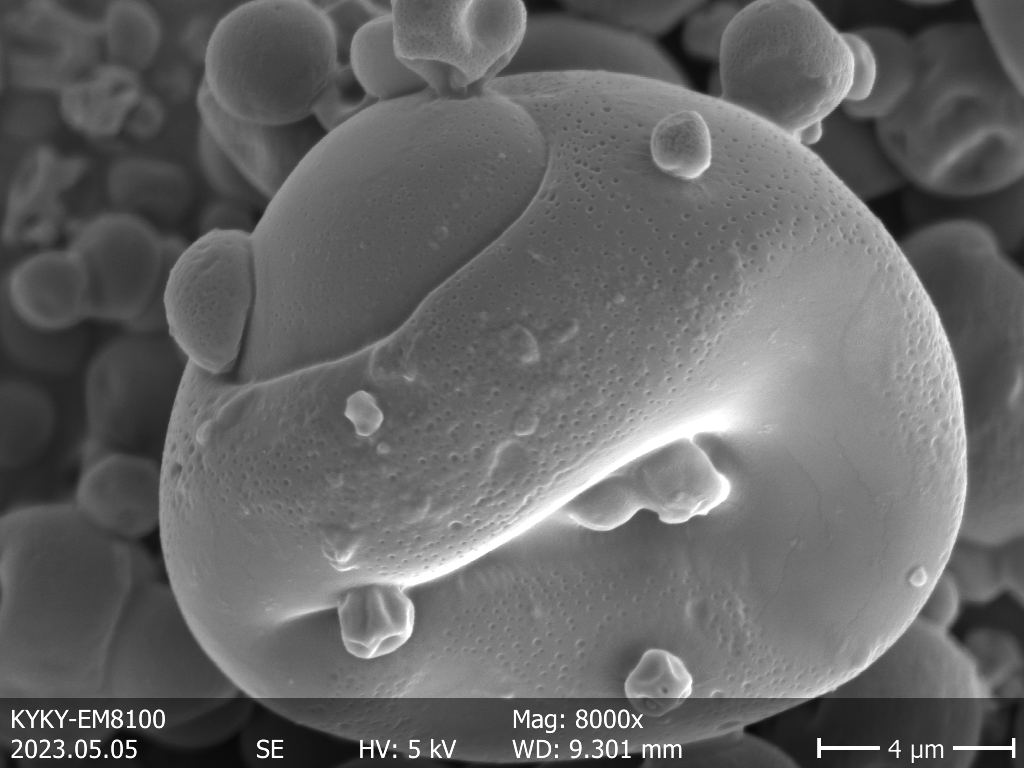
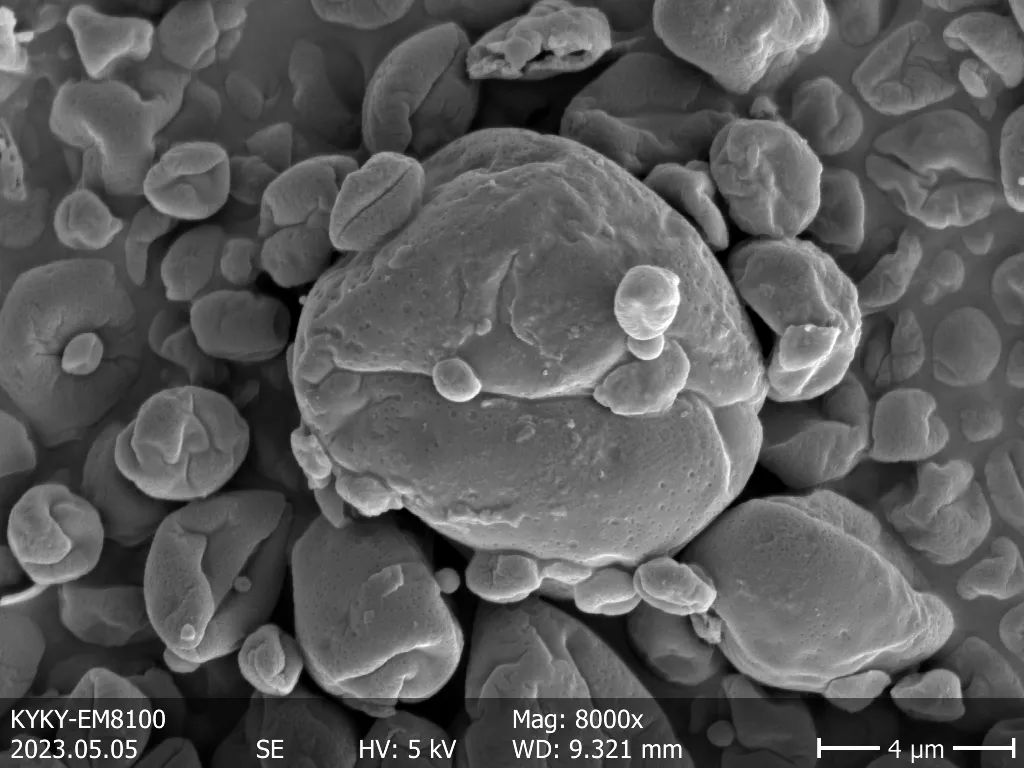
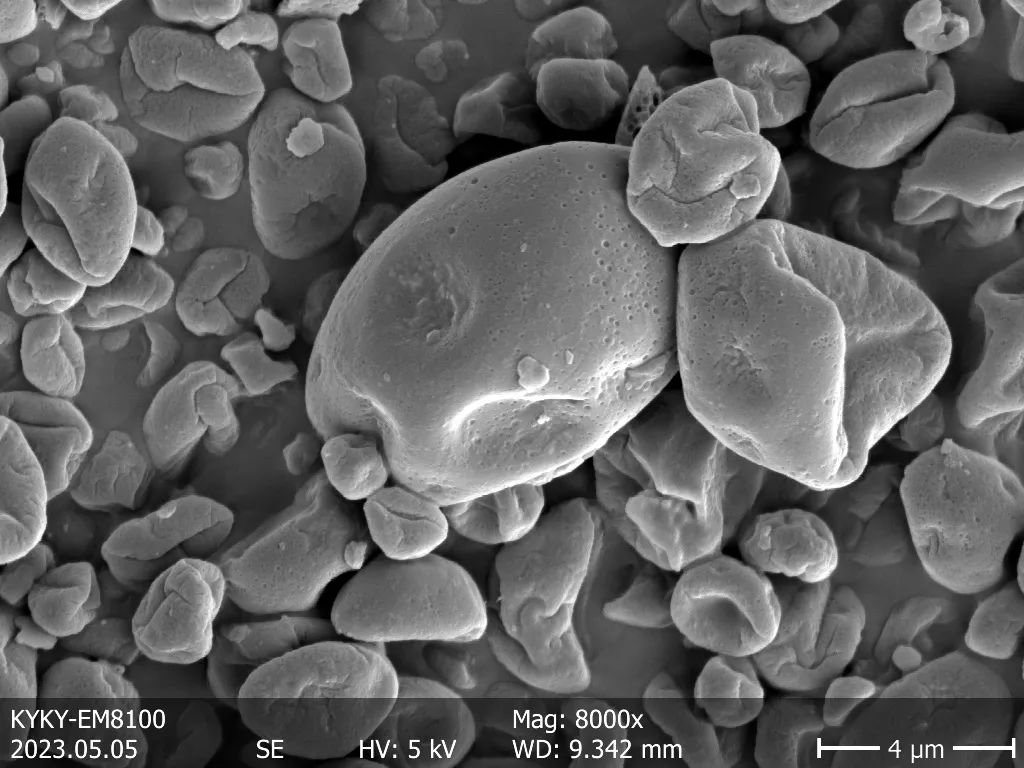
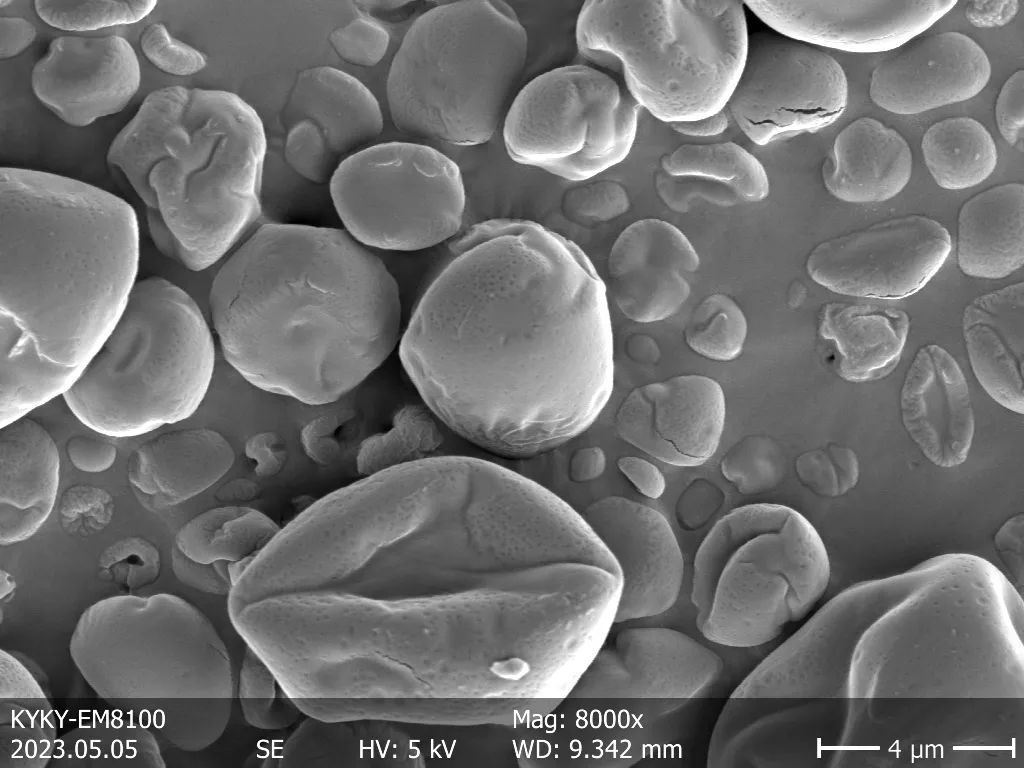

Powder particles of different sizes and shapes were photographed with a field emission gun scanning electron microscope
(2) Gefitinib tablet powder
Gefitinib is an oral drug used to treat locally advanced or metastatic non-small cell carcinoma that has previously received chemotherapy. The drug inhibits the growth, metastasis and Angiogenesis, while increasing apoptosis in tumor cell-derived lines.
The particle uniformity of gefitinib tablet powder can be observed by scanning electron microscope. The following two pictures are the gefitinib tablets before and after crushing. The crushing results of the drug can be seen under the scanning electron microscope, and the degree and uniformity of the crushing can be clearly observed, thus helping researchers to control the crushing conditions.
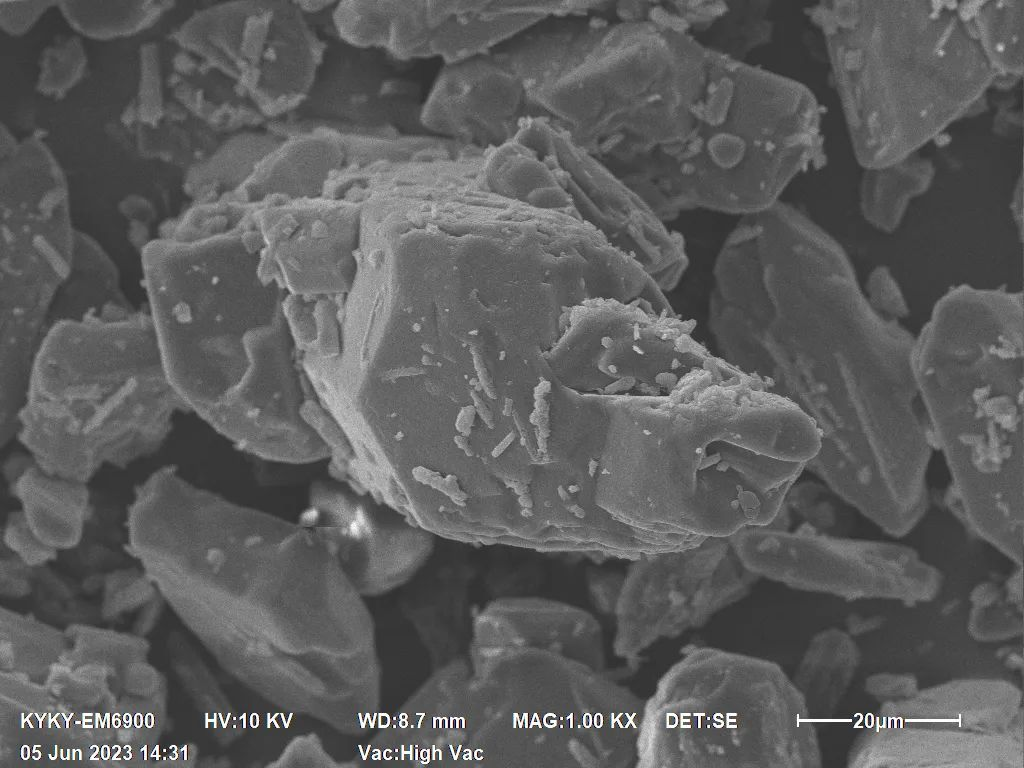
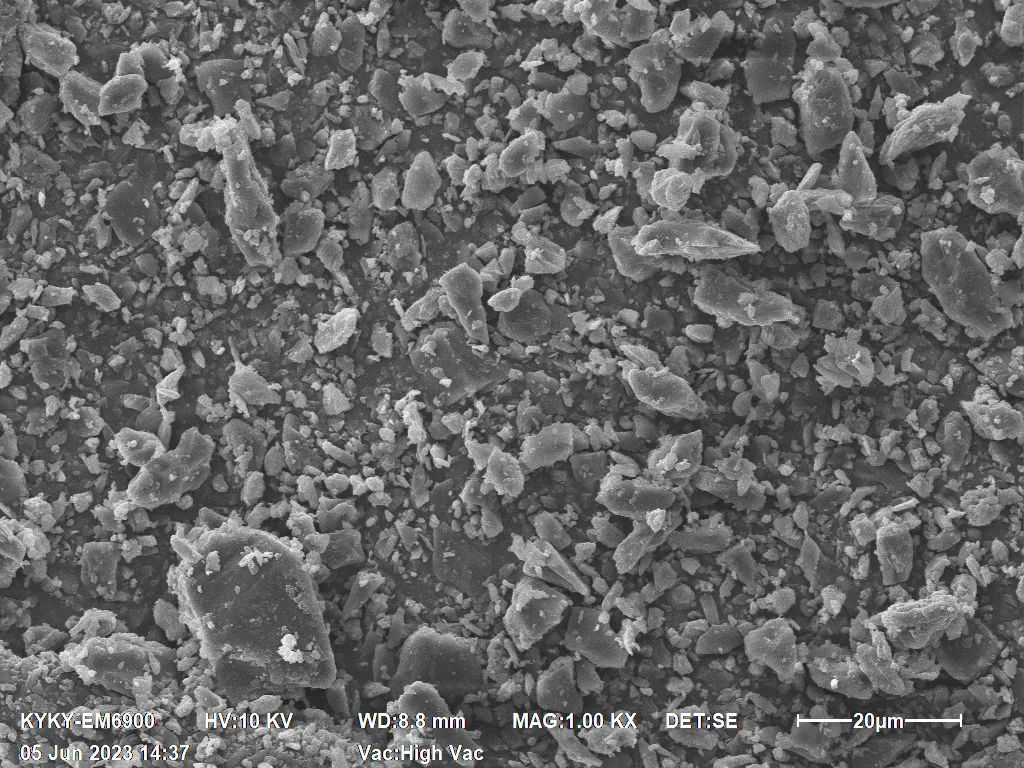
Pre- and post-shredding drug powder particles were photographed using a tungsten-filament scanning electron microscope
(3) Acetylcysteine Capsule Powder
Acetylcysteine is the acetylated form of the amino acid cysteine. The powder is in the form of white uneven granules. It is used for respiratory diseases with excessive thick phlegm and mucus. It has many effects including anti-oxidation, anxiety and depression. Complementary therapeutic effects, although not rigorously proven, may help curb cancer growth and improve brain health, reducing symptoms of neurodegenerative diseases.
The microscopic morphology of acetylcysteine capsule powder can be observed and conducted in-depth scientific research by scanning electron microscope. The following two pictures are acetylcysteine capsule powder with magnifications of 500x and 200x respectively. Under the scanning electron microscope, it can be seen that the particle size is not uniform, ranging from a few microns to hundreds of microns, and the surface of the particles is uneven. , Small particles of different sizes and quantities will adhere to the surface of large particles. The shapes of the particles are various, and the spherical shape is more common.
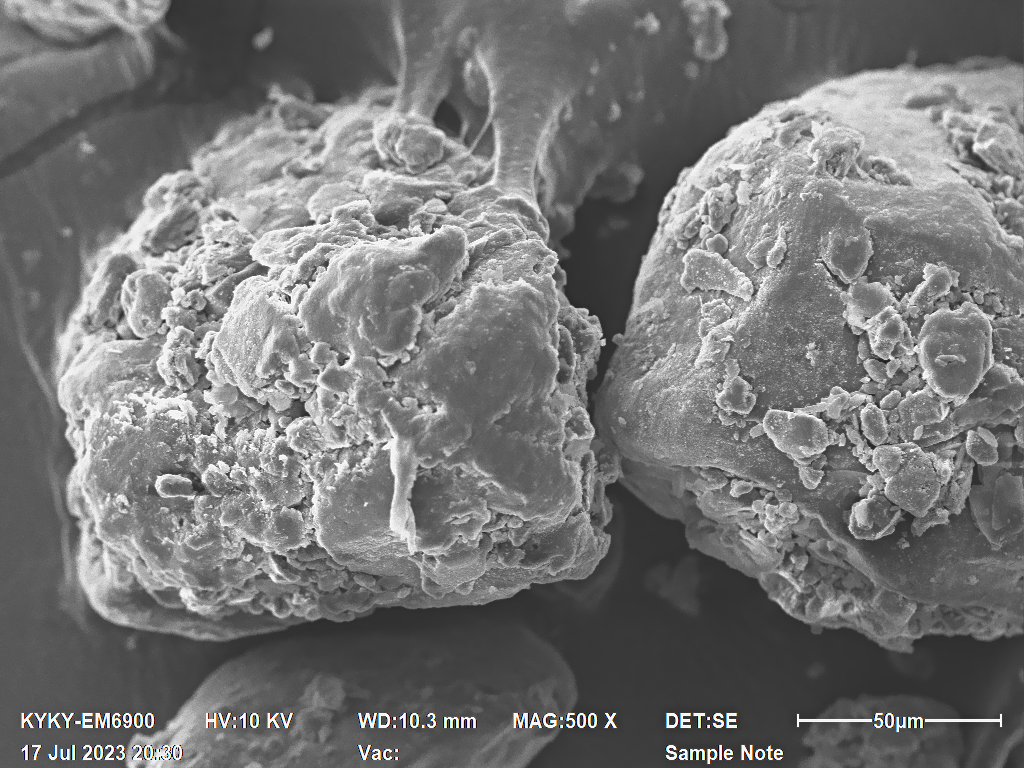
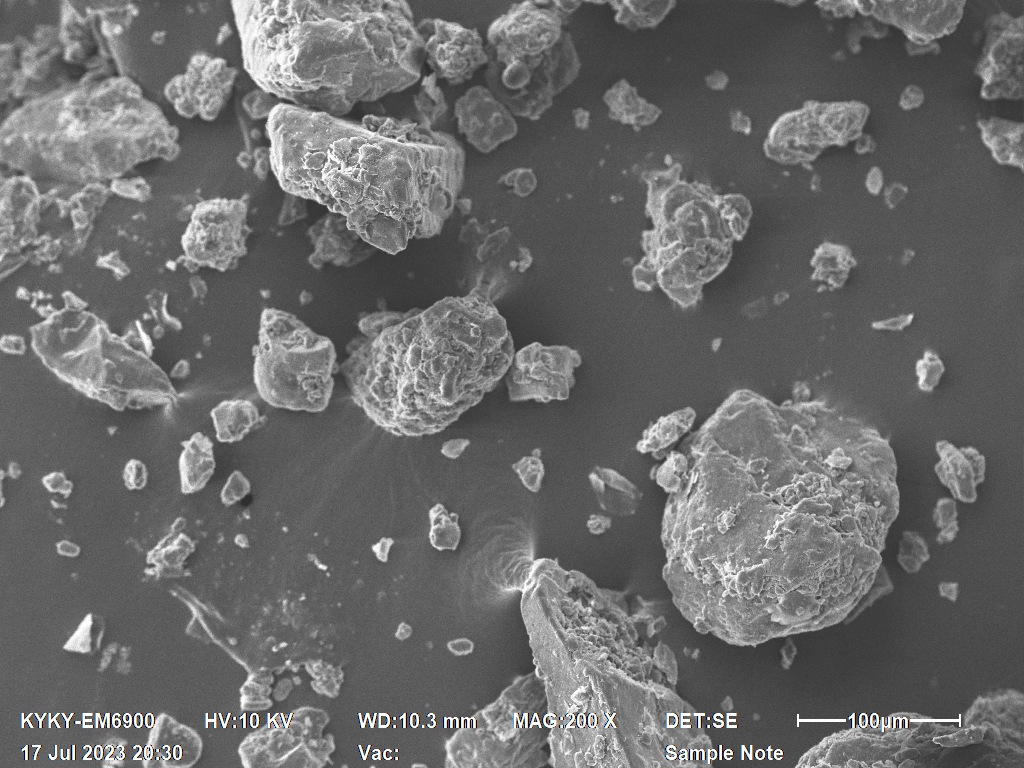
Drug powder particles at different magnifications were taken with a tungsten filament scanning electron microscope
6. Summary
Scanning electron microscopy can observe the microstructure of solid drugs in detail, and achieve ideal results, improving the efficiency of drug characterization. At the same time, the scanning electron microscope can observe and count the microscopic morphology of various drug particles, which can be used for R&D, production and process adjustment in the actual manufacturing process. It can calibrate and count the size of conventional drug particles and irregular particles, and provide a supporting solution for particulate matter statistics.
Tungsten Filament Scanning Electron Microscope SEM3300
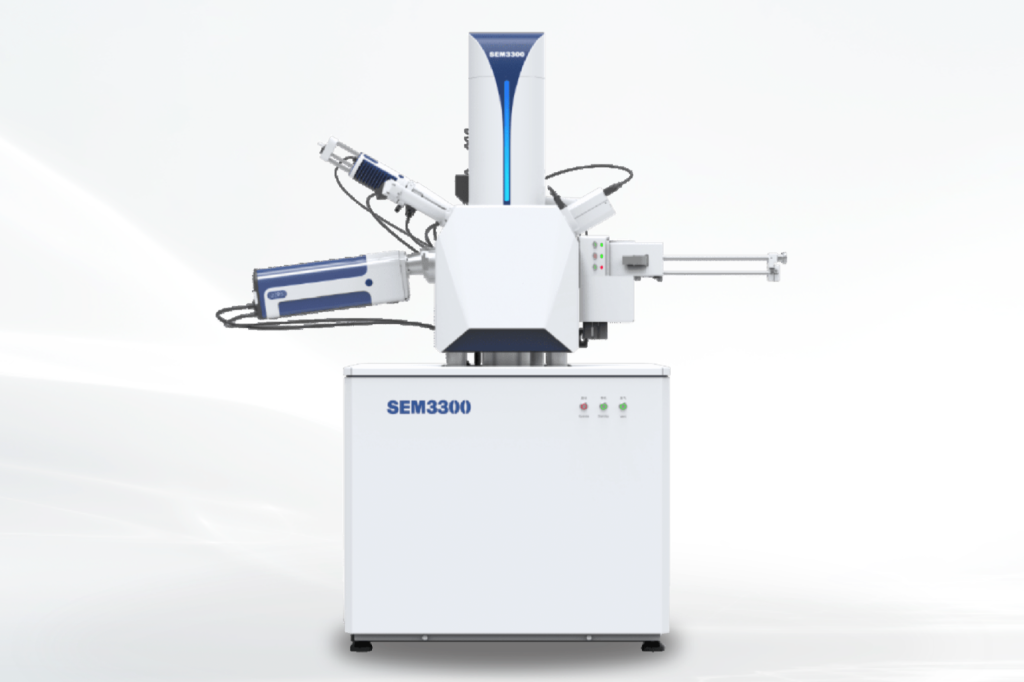
SEM3300 is a new generation of tungsten filament scanning electron microscope with a resolution better than 2.5nm. The special electronic optical path design breaks through the resolution limit of the tungsten filament, and at a low voltage of 1 kV, it reaches a resolution of 5 nm.
With excellent imaging quality, high-resolution images can be obtained under different field of view. Large depth of field, imaging full of three-dimensional. Abundant expansibility to help you explore in the world of microscopy imaging.